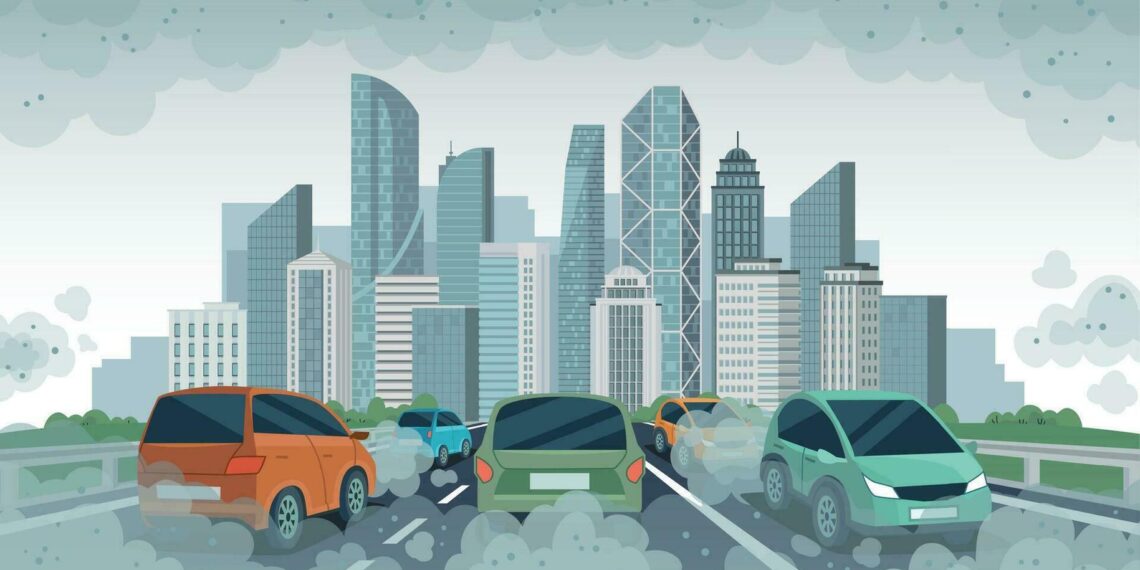Understanding Emission Standards: Foundations and Implications
Emission standards are regulations set by governments to control the release of pollutants into the atmosphere, aiming to protect air quality and public health. These standards have profound implications for industries, transportation, and overall environmental sustainability.
1. Origins and Evolution of Emission Standards
The establishment of emission standards can be traced back to growing concerns about air pollution in industrialized nations. Early regulations primarily targeted visible pollutants like smoke and particulate matter. Over time, as scientific understanding of air pollution’s impact on health and the environment deepened, standards evolved to include a wider range of pollutants, such as nitrogen oxides (NOx), sulfur dioxide (SO2), carbon monoxide (CO), and volatile organic compounds (VOCs). These standards also became more stringent, reflecting advancements in pollution control technologies and a greater emphasis on environmental protection.
2. Key Regulatory Frameworks Worldwide
Different countries and regions have developed their own regulatory frameworks for emission control. The United States Environmental Protection Agency (EPA) sets national standards under the Clean Air Act. The European Union implements emission standards through directives, which member states must then transpose into their own national laws. China has also implemented increasingly stringent emission standards in recent years to combat air pollution. These frameworks often include emission limits for various sources, monitoring and reporting requirements, and enforcement mechanisms to ensure compliance.
3. Impact on Industries and Technologies
Emission standards have a significant impact on various industries, particularly those with high emissions, such as power generation, manufacturing, and transportation. Industries are often required to invest in new technologies and processes to meet these standards. For example, power plants may install scrubbers to remove SO2 from flue gas, while automobile manufacturers develop more fuel-efficient engines and exhaust after-treatment systems to reduce emissions. These standards have driven innovation in pollution control technologies and have contributed to cleaner production processes.
4. Economic Considerations and Challenges
While emission standards are crucial for environmental protection, they also raise economic considerations. Complying with these standards can be costly for businesses, potentially impacting their competitiveness. There can also be challenges in balancing environmental goals with economic growth, particularly in developing countries. However, studies have also shown that the benefits of emission standards, such as improved public health and reduced environmental damage, often outweigh the costs. Furthermore, the development and deployment of clean technologies can create new economic opportunities.
Decoding Carbon Footprint: Measuring Environmental Impact
Understanding carbon footprint is crucial for assessing our impact on the planet and making informed decisions towards sustainability. It provides a comprehensive view of greenhouse gas emissions caused by our actions.
1. What is a Carbon Footprint?
A carbon footprint represents the total greenhouse gas (GHG) emissions caused by an individual, organization, event, or product. It’s typically measured in tonnes of carbon dioxide equivalent (CO2e), which standardizes the impact of different GHGs like methane and nitrous oxide into a single, comparable metric. Understanding this concept is the first step towards reducing environmental impact.
2. Calculating Your Footprint
Calculating a carbon footprint involves assessing emissions from various sources, including energy consumption (electricity, heating, transportation), waste generation, and the production and consumption of goods and services. Online calculators and professional assessments can help individuals and organizations quantify their emissions, providing a baseline for improvement.
3. Direct vs. Indirect Emissions
Direct emissions are those produced directly by an entity, such as burning fuel for transportation or heating. Indirect emissions result from activities where the entity consumes energy or products produced by others. For example, electricity consumption causes indirect emissions at the power plant. Both types of emissions contribute to the overall carbon footprint.
4. Reducing Your Carbon Footprint
Reducing your carbon footprint involves implementing strategies to minimize GHG emissions. This can include using energy-efficient appliances, switching to renewable energy sources, reducing meat consumption, using public transportation or cycling, and buying products with lower carbon footprints. Small changes can collectively make a significant impact.
Exhaust Treatment Technologies: Innovations and Challenges
Exhaust treatment technologies play a vital role in reducing harmful emissions from vehicles and industrial processes, safeguarding air quality and public health. These technologies are constantly evolving to meet stricter environmental regulations.
1. Advancements in Catalytic Converters
Modern catalytic converters incorporate advanced materials like perovskites and single-atom catalysts to enhance their efficiency and durability. These materials improve the conversion of harmful pollutants such as nitrogen oxides (NOx), carbon monoxide (CO), and hydrocarbons (HC) into less harmful substances like nitrogen, carbon dioxide, and water. Research focuses on increasing the operational temperature range and reducing the reliance on precious metals to lower costs and improve sustainability.
2. Diesel Particulate Filter (DPF) Optimization
Diesel Particulate Filters (DPFs) are crucial for trapping particulate matter (PM) from diesel engine exhaust. Innovations in DPF technology include improved filter designs, advanced regeneration strategies, and the integration of sensors for real-time monitoring of filter performance. These advancements aim to reduce backpressure, improve fuel efficiency, and extend the lifespan of DPFs. Research is also underway to develop DPFs that can capture finer particles, including nanoparticles.
3. Selective Catalytic Reduction (SCR) Systems
Selective Catalytic Reduction (SCR) systems use a catalyst to convert NOx into nitrogen and water, typically using ammonia as a reductant. Recent advancements focus on improving the efficiency of ammonia delivery systems, developing more robust catalysts that are less sensitive to sulfur poisoning, and optimizing the SCR process for a wider range of operating conditions. On-going research explores alternative reductants to ammonia, such as urea, to enhance safety and reduce complexity.
Green Mobility: Transforming the Future of Transportation
Green mobility aims to minimize the environmental impact of transportation through sustainable practices and technologies. It encompasses a wide range of solutions, from electric vehicles to improved public transit, all working towards a cleaner and more efficient transportation ecosystem.
1. Electric Vehicles (EVs) and the Electric Revolution
Electric vehicles (EVs) are at the forefront of green mobility, offering a pathway to significantly reduce greenhouse gas emissions from transportation. Unlike traditional combustion engine vehicles, EVs run on electricity, which can be sourced from renewable sources like solar and wind power. This transition not only lowers emissions but also reduces air pollution in urban areas, improving public health. The growing availability of EV models and charging infrastructure further supports the shift towards electric mobility.
2. Sustainable Public Transportation
Investing in and improving public transportation systems is crucial for green mobility. Efficient bus networks, light rail systems, and subways can carry large numbers of people, reducing the number of individual vehicles on the road. Furthermore, integrating electric buses and trains into public transit fleets can further minimize emissions. Enhancing the accessibility, affordability, and convenience of public transit encourages more people to choose it over personal vehicles.
3. Cycling and Micromobility Solutions
Cycling and micromobility options, such as e-scooters and bike-sharing programs, offer eco-friendly alternatives for short-distance travel. These modes of transportation produce zero emissions and contribute to healthier lifestyles by promoting physical activity. Cities are increasingly investing in dedicated bike lanes and pedestrian-friendly infrastructure to support cycling and micromobility, creating safer and more appealing environments for these modes of transport.
Vehicle Inspection Systems: Ensuring Compliance and Safety
Vehicle inspection systems are crucial for maintaining road safety and reducing vehicle emissions by ensuring vehicles meet required standards. These systems identify potential issues, promoting safer driving conditions and a healthier environment.
1. The Role of Vehicle Inspections
Vehicle inspection systems play a vital role in identifying vehicles that do not meet minimum safety or emissions standards. These inspections help to ensure that vehicles on the road are safe to operate and are not contributing excessively to air pollution. Regular checks can catch problems early, preventing more serious and costly repairs later. They also encourage vehicle owners to maintain their vehicles properly.
2. Key Components of Inspection Systems
Vehicle inspection systems typically involve a combination of visual inspections, mechanical tests, and emissions testing. Visual inspections check for things like worn tires, broken lights, and damaged bodywork. Mechanical tests assess the functionality of critical systems like brakes and steering. Emissions testing measures the levels of pollutants being released into the atmosphere. Advanced systems may use computerized diagnostic tools to identify hidden problems.
3. Benefits of Regular Inspections
Regular vehicle inspections provide numerous benefits. They enhance road safety by identifying and addressing safety-related defects. They improve air quality by ensuring vehicles meet emissions standards. Inspections also help to protect consumers by preventing the sale of unsafe or polluting vehicles. Furthermore, well-maintained vehicles tend to be more fuel-efficient, saving drivers money and reducing overall environmental impact.
Fuel Efficiency Strategies: Balancing Performance and Sustainability
Improving fuel efficiency is crucial for reducing emissions and promoting sustainability. This involves optimizing vehicle design and driving habits to minimize fuel consumption without compromising performance.
1. Aerodynamic Enhancements
Streamlining vehicle design reduces air resistance, directly improving fuel efficiency. Techniques include optimizing vehicle shape, adding spoilers, and using aerodynamic side mirrors. For example, the design of electric vehicles often prioritizes aerodynamics to maximize range. Lightweight materials further contribute to efficiency gains by reducing the overall weight the engine must propel.
2. Engine Optimization
Advancements in engine technology play a significant role. This includes improved combustion processes, variable valve timing, and turbocharging. These technologies allow engines to extract more energy from each gallon of fuel. Direct fuel injection, for instance, delivers fuel directly into the combustion chamber, improving efficiency and reducing emissions.
3. Hybrid and Electric Powertrains
Hybrid and electric vehicles offer substantial fuel efficiency improvements. Hybrid systems combine an internal combustion engine with an electric motor, allowing for regenerative braking and electric-only driving at low speeds. Pure electric vehicles eliminate fuel consumption altogether, relying solely on electricity. Government incentives and technological advancements are driving increased adoption of these vehicles.
Q&A
Question 1: What are emission standards, and why are they important?
Answer: Emission standards are government regulations controlling pollutant release into the atmosphere. They’re crucial for protecting air quality and public health, impacting industries, transportation, and overall environmental sustainability. These standards evolve as scientific understanding of pollution’s effects improves and technology advances.
Question 2: How do emission standards impact industries and the development of new technologies?
Answer: Emission standards significantly affect industries, especially high-emission sectors like power generation and transportation. Meeting these standards necessitates investment in new technologies and processes. For example, power plants might install scrubbers, while car manufacturers develop fuel-efficient engines and exhaust systems. This drives innovation in pollution control and cleaner production.
Question 3: What are the key components of a carbon footprint, and how can it be reduced?
Answer: A carbon footprint represents the total greenhouse gas emissions from an individual, organization, or product, measured in tonnes of CO2e. It encompasses direct emissions (e.g., burning fuel) and indirect emissions (e.g., electricity consumption). Reducing it involves strategies like using energy-efficient appliances, switching to renewables, reducing meat consumption, and using public transport.
Question 4: What are some major exhaust treatment technologies, and what challenges do they face?
Answer: Key technologies include three-way catalytic converters (targeting NOx, CO, HC), diesel particulate filters (DPFs for particulate matter), and selective catalytic reduction (SCR) systems (for NOx). Challenges include limitations at low temperatures (catalytic converters), regeneration requirements and backpressure (DPFs), and ammonia slip (SCR). Cold start emissions remain a significant hurdle across all technologies.
Question 5: How do vehicle inspection systems contribute to emissions reduction and road safety?
Answer: Vehicle inspections identify vehicles failing safety or emission standards, promoting safer roads and cleaner air. They involve visual checks, mechanical tests, and emissions testing, catching problems early and encouraging proper vehicle maintenance. Robust inspection programs demonstrably lower air pollution levels by ensuring vehicles meet emission limits.
References:
- https://www.ccjdigital.com/alternative-power/article/15750300/how-trumps-rollback-of-emissions-rules-affects-trucking-fleets
- https://eelp.law.harvard.edu/tracker/corporate-average-fuel-economy-standards-greenhouse-gas-standards/
- https://reason.com/2025/07/02/under-the-big-beautiful-bill-car-companies-wont-be-fined-for-failing-to-hit-arbitrary-fuel-efficiency-goals/
- https://www.kbb.com/car-news/america-now-effectively-has-no-fuel-economy-rules/
- https://www.cbtnews.com/can-congress-undo-the-electric-vehicle-mandate-in-the-future/






